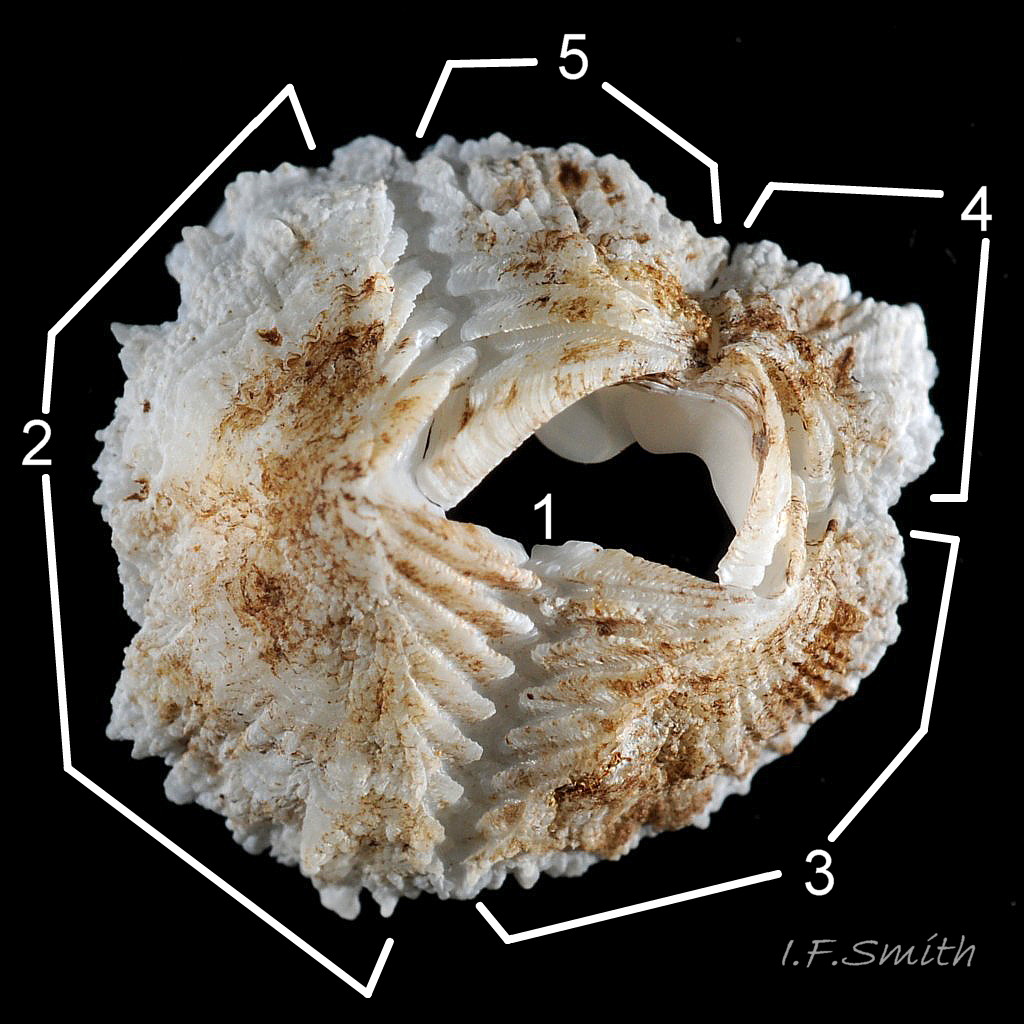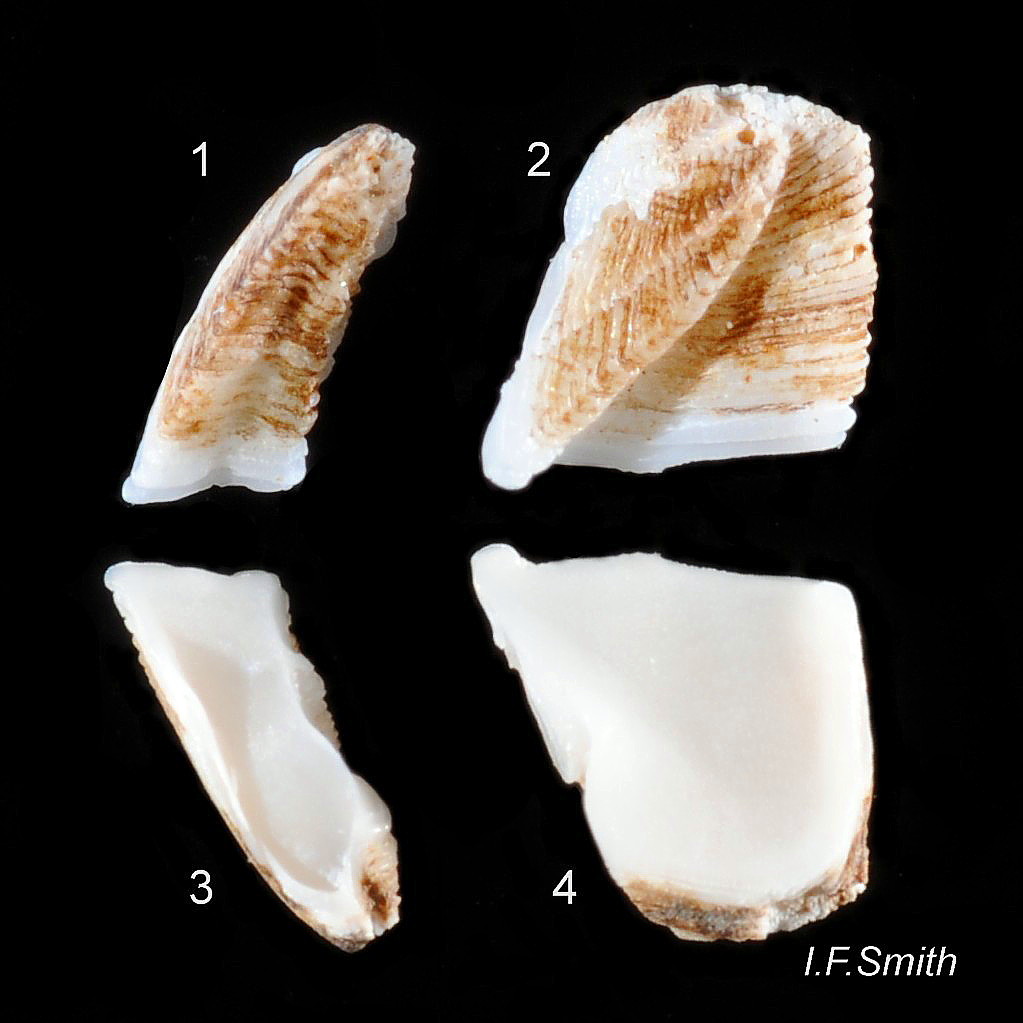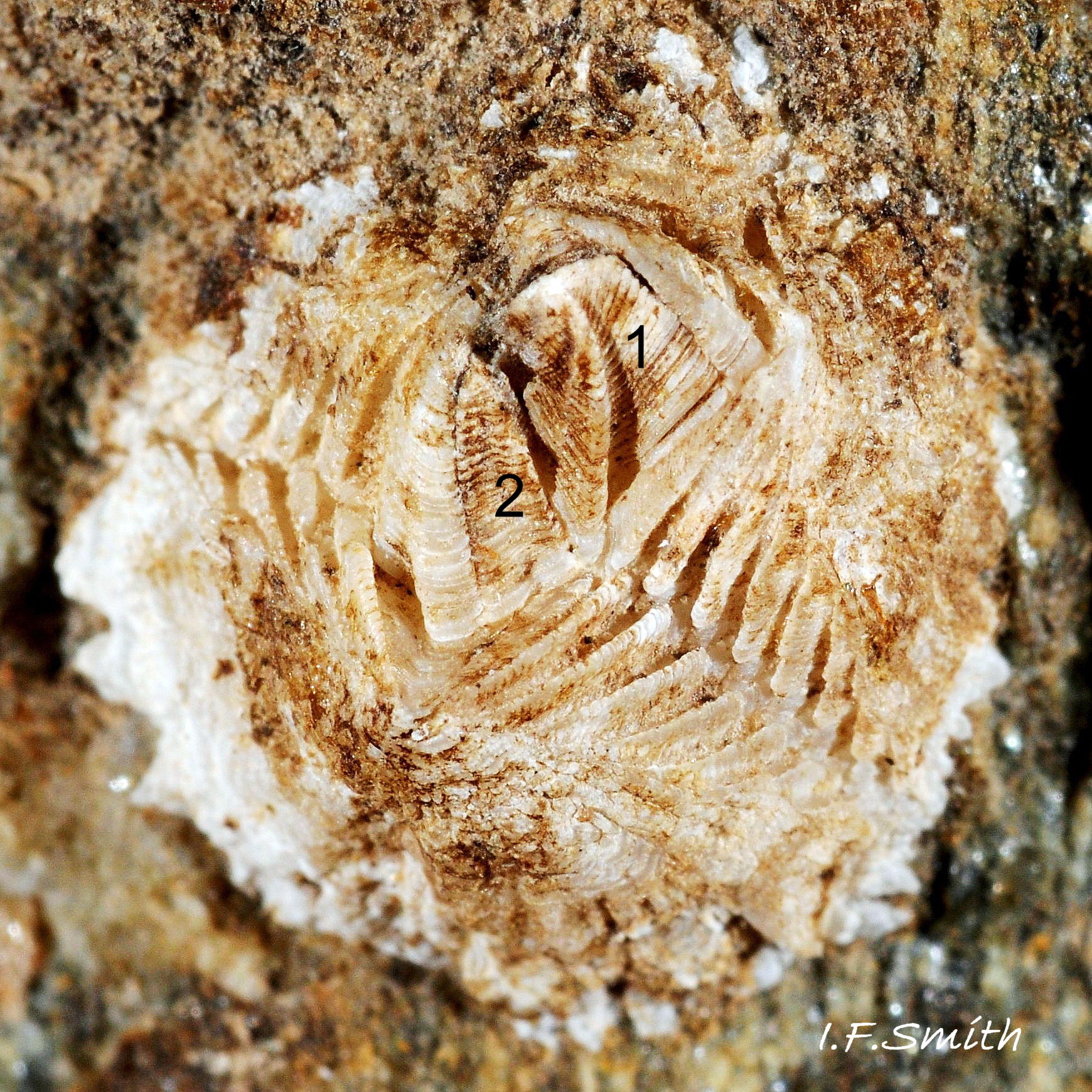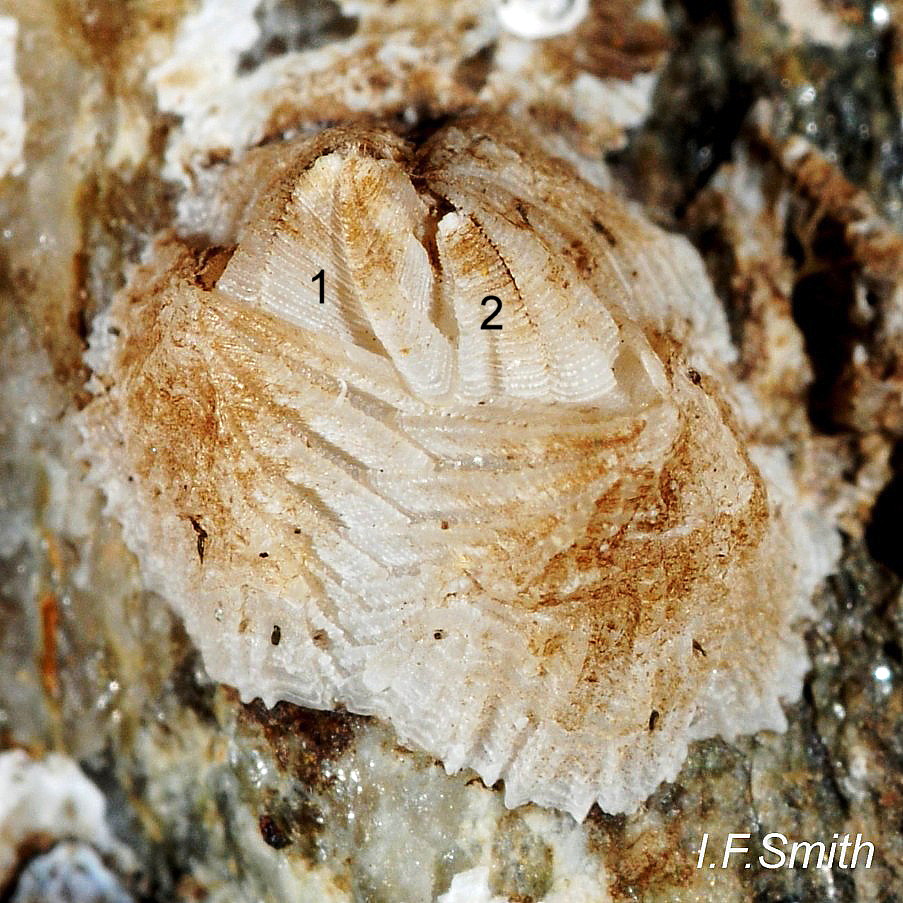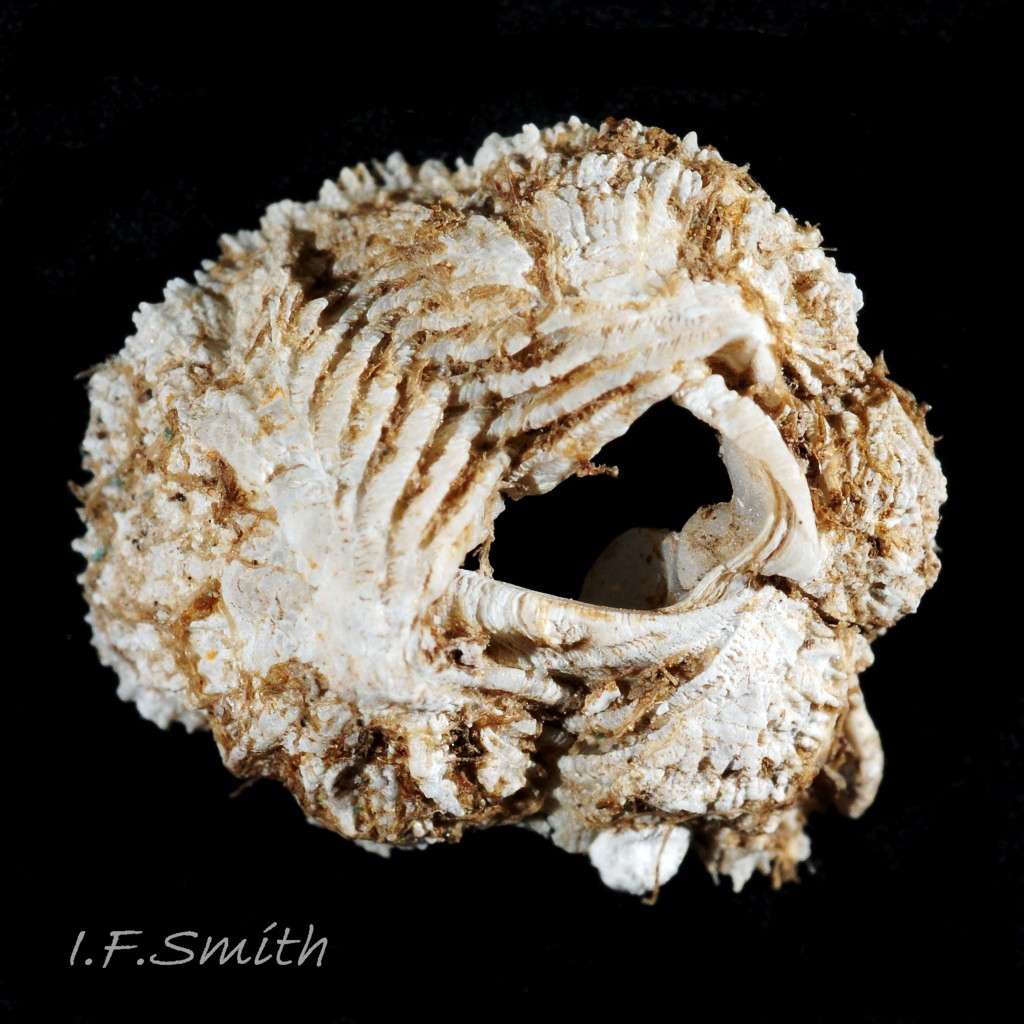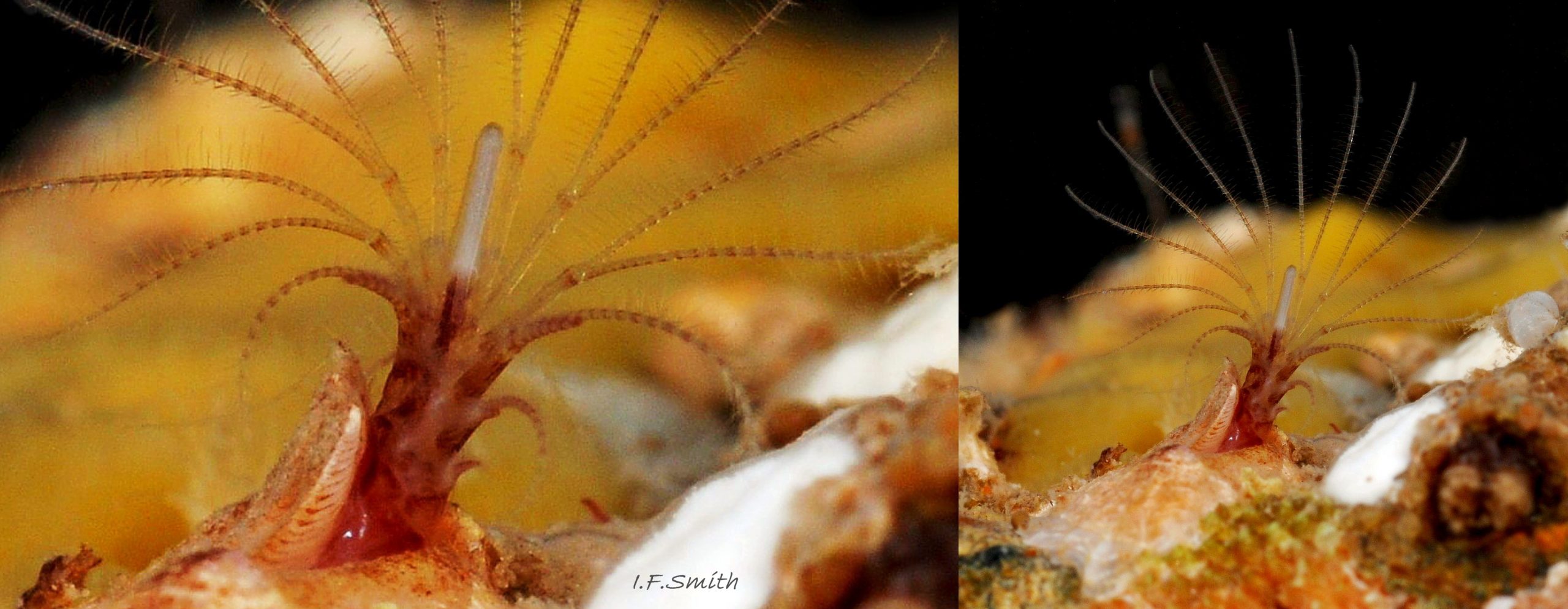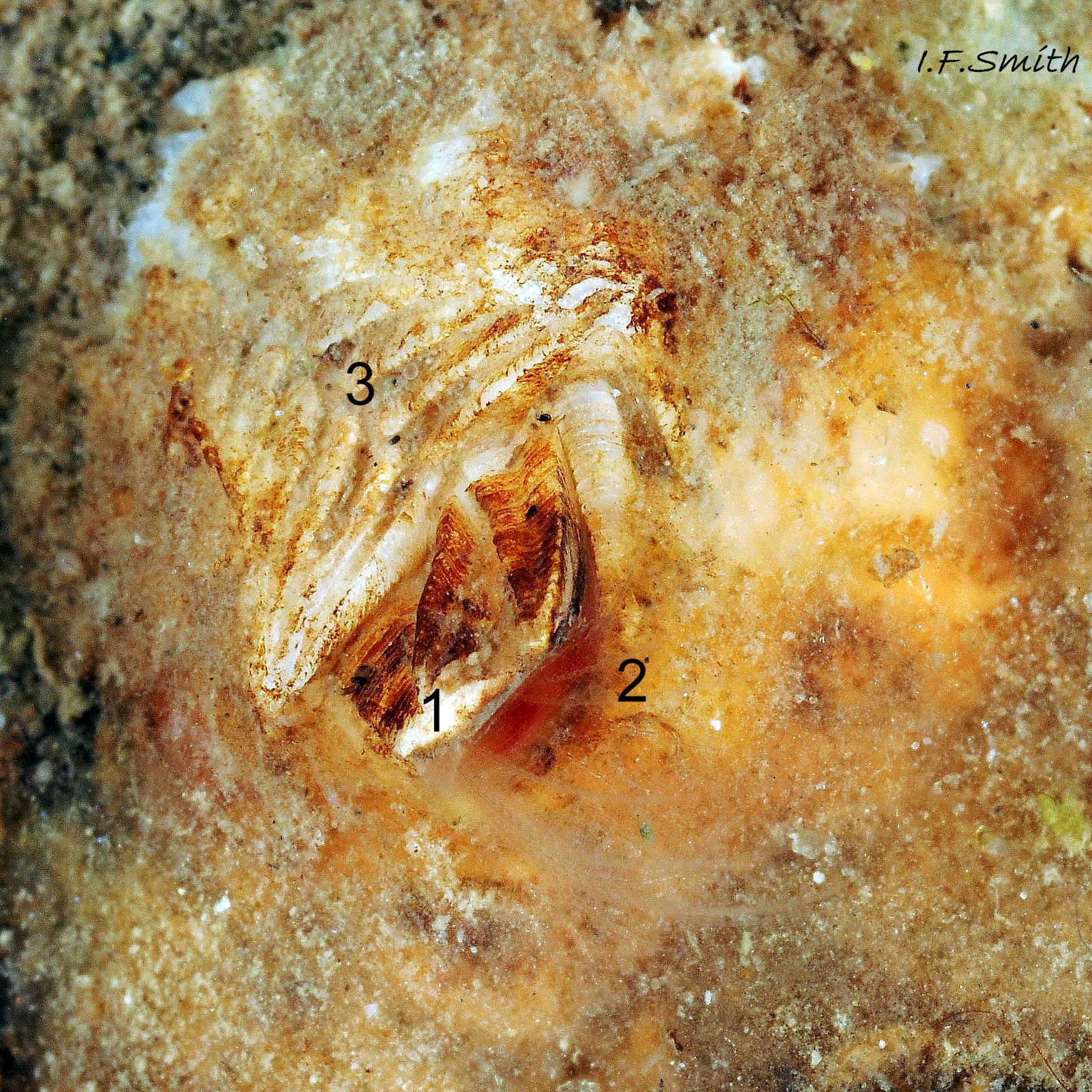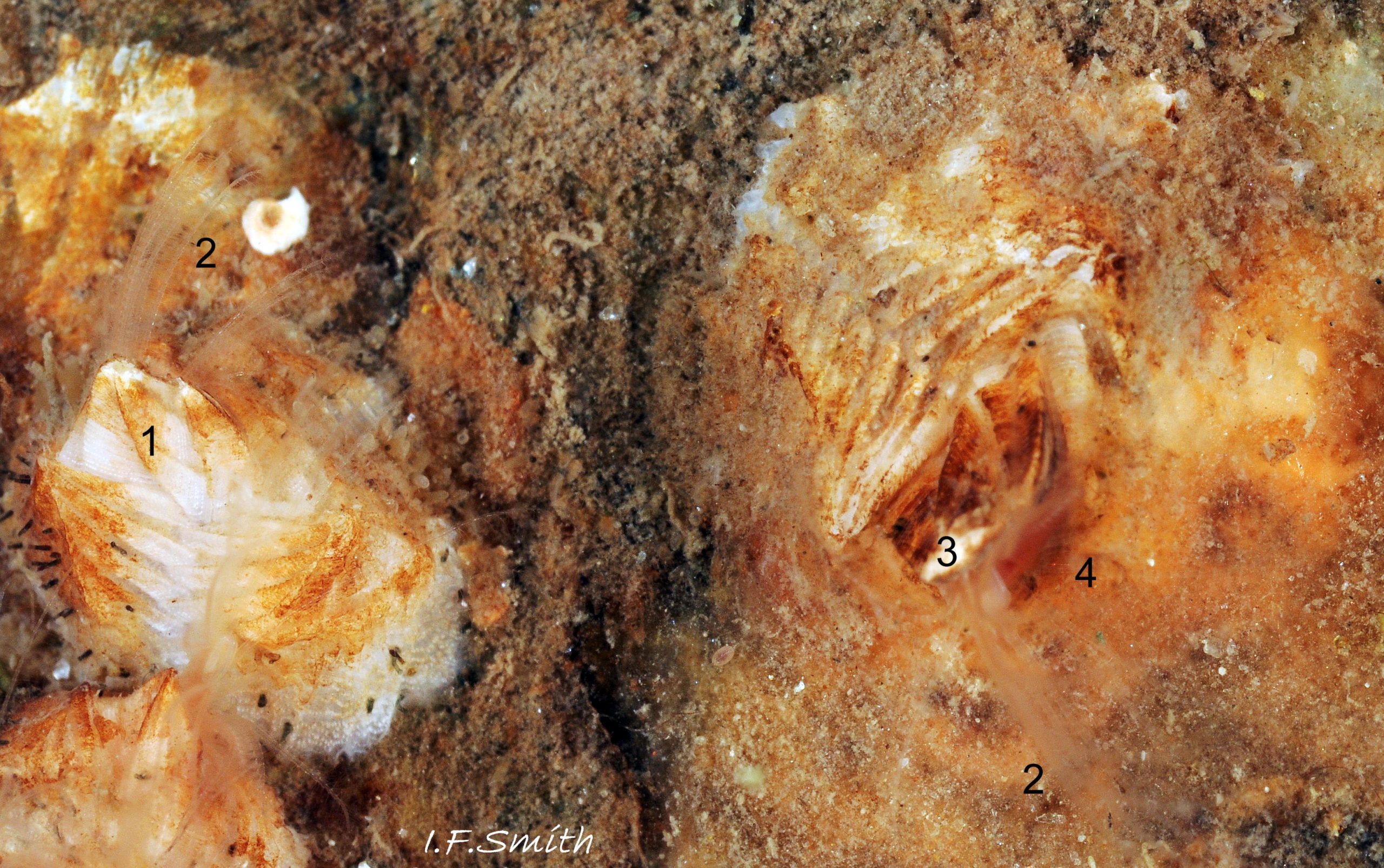Click image to enlarge with full caption
Verruca stroemia (O.F. Müller, 1776) Text I.F. Smith
Current taxonomy: World Register of Marine Species
www.marinespecies.org/aphia.php?p=taxdetails&id=106257
Vernacular names
Warty barnacle (English), Crachen ddafadennog (Welsh), Ritspok (Dutch), Vorterur (Norwegian).
Glossary below
Description
The maximum diameter is 10 mm, but it is usually less. When the valves are removed, the rostral end of the skewed ‘D’ outline of the opercular aperture is sharper than the carinal end
(). The operculum (lid) is a single valve made of a large tergum and small scutum (), fixed together when live to open as a single lid hinged on the straight side of the ‘D’ aperture (). They have strong rope-like ridges covered with closely spaced transverse grooves ( ). When shut, the opercular valve is parallel with the barnacle’s base and. when open, is tilted up laterally. Some opercula hinge on the right () and others on the left (). There are no obvious tergoscutal flaps, but the distinctive orange-red to pink-red interior is often visible along the open edge of the sideways tilting operculum (). When V. stroemia is covered in sponge or other growth, the reddish slit is often the only visible feature (), but when viewed from directly above, the slit may be hidden ().
The four deeply corrugated wall plates are made of a rostrum, carina and the other immobile smaller tergum and larger scutum (). The barnacle has a squashed appearance with thick rib ends forming chevrons at the sutures between the plates ()
Key identification features
1; when the operculum is removed, the aperture has a skewed ‘D’ outline ( ).
2: when live, the aperture shows as a reddish longitudinal slit ().
3: the operculum has a single side-hinged valve; an articulated tergum and scutum ()
4: the four wall plates look squashed with thick ribs forming chevrons ()
Similar species
There is no similar species in Britain and northern Europe. The only other species with four wall plates is Austrominius modestus (Darwin, 1854) which lacks the sculpture of thick ribs. The similar V. spengleri (Darwin, 1854) in the Mediterranean, southern Spain, Azores and Madeira has a sharp straight ridge on the underside of moveable scutum part of the operculum (Southward, 2008).
Habits and ecology
V. stroemia requires full, or near-full, marine salinity. It is absent or rare in areas of soft substrate and turbid terrestrial runoff such as Liverpool Bay. It is common on other rocky coasts at LWS and offshore to 500 metres. It lives on and under rocks, in crevices, on algae and on shells. It captures micro-organisms from the water with cirri spread like a fan. The cirri extend, hold open stationary briefly and then withdraw with the catch before repeating the action ().
The main release of nauplii into the plankton is in spring. They settle from April to the end of September (Southward, 2008).
Distribution and status
V. stroemia occurs from the White Sea to Portugal, but not the inner Baltic (Southward, 2008). GBIF map: www.gbif.org/species/2115659 . Common around most of Britain and Ireland on hard substrate. UK map, NBN: species.nbnatlas.org/species/NHMSYS0021052729
References and links
Eales, N.B., 1967. The littoral fauna of the British Isles. Fourth edition. Cambridge University Press.
Rainbow, P.S., 1984. An introduction to the biology of British littoral barnacles. Field studies 6: 1-51.
www.field-studies-council.org/fieldstudies/documents/vol6...
Smith, I.F., 2015. Introduction to Barnacle Morphology & Identification.
DOI: 10.13140/RG.2.1.4006.3527 (PDF)
www.researchgate.net/publication/275464262_Introduction_t…
Southward, A.J., 2008. Barnacles. London, Linnean Society.
Glossary
carina = posterior wall plate adjoining the tergal opercular plate.
carinal = (adj.) of the carina.
cirri = (sing. cirrus) feather-like thoracic limbs used in filter feeding.
left = on left when barnacle viewed from above with rostrum at 12 o’clock.
LWS = low water spring tide.
nauplius = (pl. nauplii) larva which swims by action of head appendages.
opercular = (adj.) of the operculum (aperture lid).
operculum = moveable lid-like structure used to close the aperture.
right = on right when barnacle viewed from above with rostrum at 12 o’clock.
rostral = (adj.) of the rostrum.
rostrum = anterior wall plate adjoining scutum.
scutum = the smaller plate on V. stroemia of the operculum (lid).
tergum = the larger opercular plate on V. stroemia.
tergoscutal flaps – tissue on the dorsal edges of the opercular valves (not on V. stroemia).
